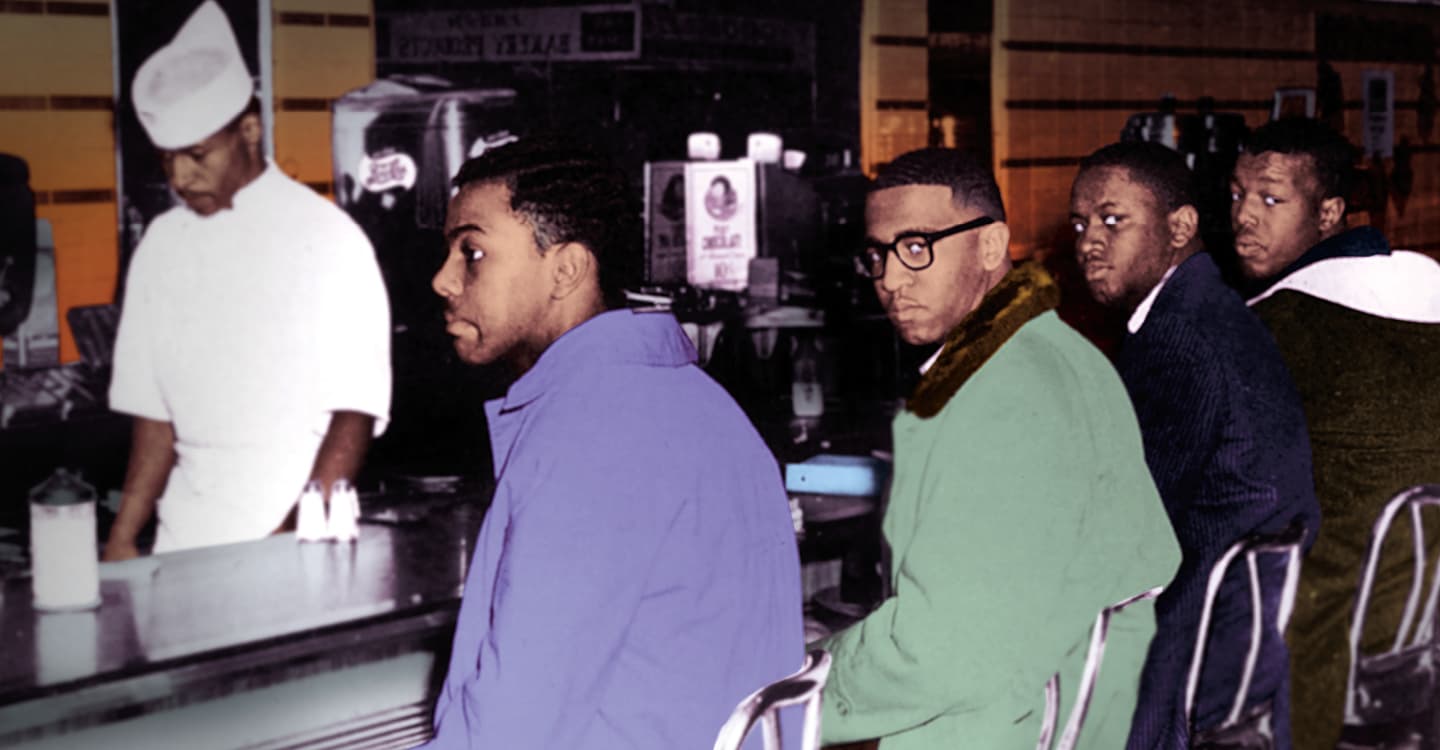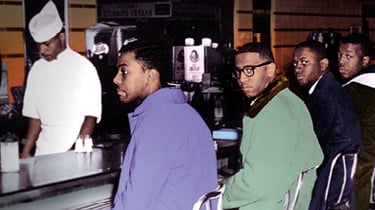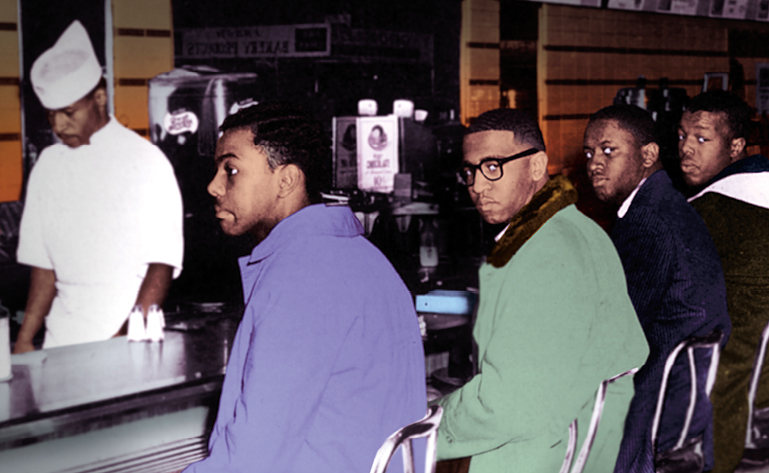Just after 4 p.m. on February 1, 1960, four black college students, dressed in their Sunday best, walked into the F. W. Woolworth department store in downtown Greensboro, North Carolina. After buying some school supplies and other items, they sat down at the all-white lunch counter and tried to order a cup of coffee.
“We don’t serve Negroes here,” a waitress behind the counter said.
“We are going to sit here until we are served,” one of the students, Jibreel Khazan*, replied.
Khazan and his classmates—Joseph McNeil, Franklin McCain, and David Richmond—never did get served that day. But the four freshmen from North Carolina A&T State, a historically black university in Greensboro, remained seated. That simple act of defiance 60 years ago would change history, inspiring a massive movement of sit-ins and other protests against segregation in scores of cities throughout the South. From that moment forward, those students would forever be known as “The Greensboro Four.”
“The spontaneous courage of those four young men, who simply decided the night before, ‘let’s do something,’ triggered a whole movement of sit-ins around the South, and supporting demonstrations in other places,” says Frye Gaillard, a historian who has written several books about the American South. “I would argue that it jump-started the civil rights movement.”
It was just after 4 p.m. on February 1, 1960. Four black college students, dressed in their Sunday best, walked into the F. W. Woolworth department store in downtown Greensboro, North Carolina. They bought some school supplies and other items. Then they sat down at the all-white lunch counter and tried to order a cup of coffee.
“We don’t serve Negroes here,” a waitress behind the counter said.
“We are going to sit here until we are served,” one of the students, Jibreel Khazan, replied.
Khazan was with his classmates—Joseph McNeil, Franklin McCain, and David Richmond. They never did get served that day. But the four freshmen from North Carolina A&T State, a historically black university in Greensboro, remained seated. That simple act of defiance 60 years ago would change history. It inspired a massive movement of sit-ins and other protests against segregation in scores of cities throughout the South. From that moment forward, those students would forever be known as “The Greensboro Four.”
“The spontaneous courage of those four young men, who simply decided the night before, ‘let’s do something,’ triggered a whole movement of sit-ins around the South, and supporting demonstrations in other places,” says Frye Gaillard, a historian who has written several books about the American South. “I would argue that it jump-started the civil rights movement.”



